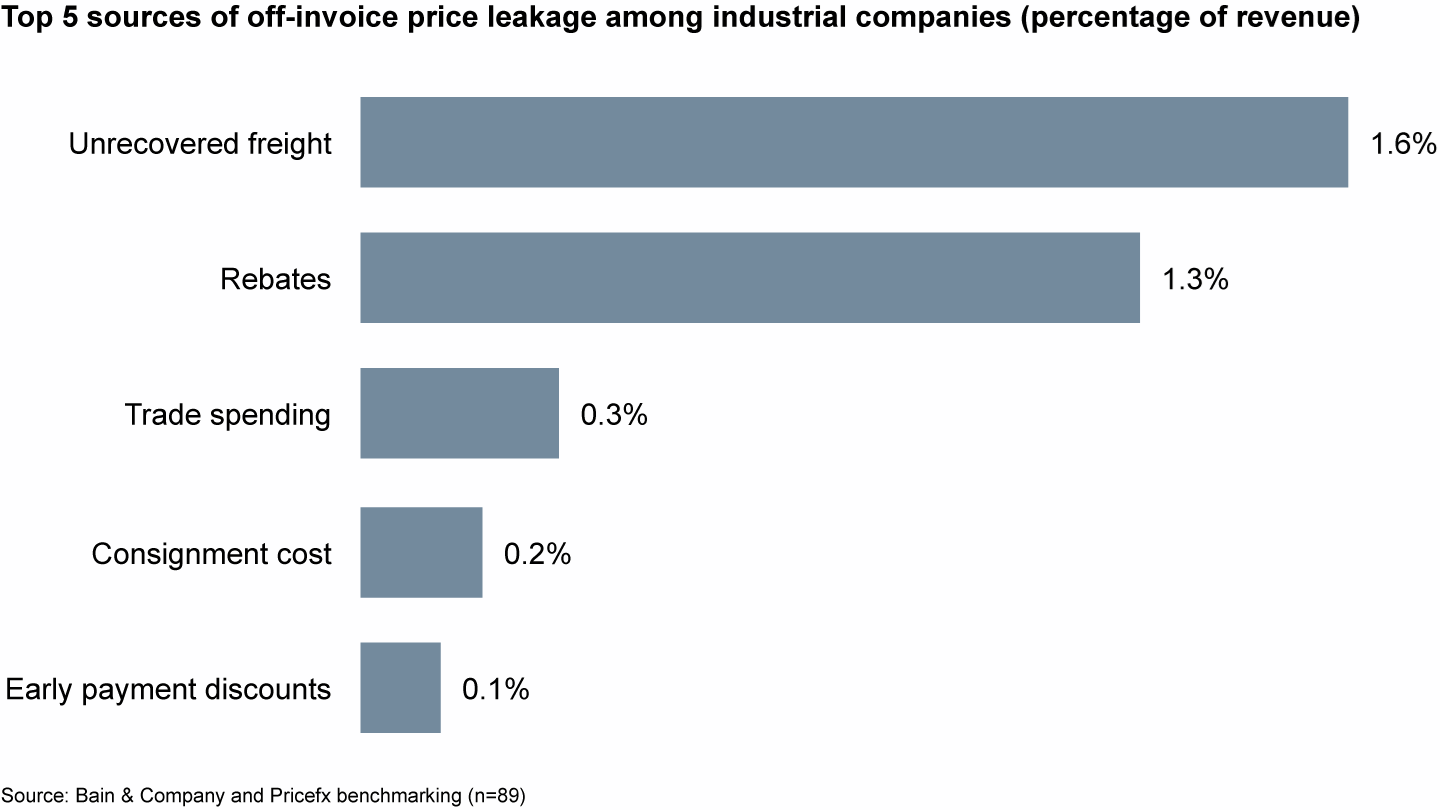Brief

Auf einen Blick
- Unrecovered freight costs, rebates, and other off-invoice discounts cause a lot of price leakage.
- Industrial companies lose over 6% of revenue, on average, through hidden discounts.
- Uncovering and addressing these problems can improve profits quickly.
- Current supply constraints caused by Covid-19 give suppliers a unique moment to reset customer expectations regarding such discounts.
An old adage in golf, “Drive for show, putt for dough,” illustrates that while the driver is an impressive club to wield, the putter matters more for the final score. In business-to-business (B2B) pricing situations, revenue from a sale may be highly visible and celebrated, but limiting leakages after the sale, which can significantly erode the value of such transactions, is critical to bringing home the dough.
To be sure, some rebates, trade spending, or other off-invoice leakages have a solid business logic and are worth the effort. Most, though, drain value because they rarely influence sales guidance or incentives. Often, they are not controlled by salespeople; they may be essentially invisible to everyone in the business; and they impose a high cost. The average business loses over 6% of revenue through off-invoice discounts and leakage, according to a global sample of industrial companies analyzed by Bain & Company and Pricefx. For a business with $1 billion in revenue, this represents a $60 million opportunity flowing straight to the bottom line.
Heading the list of off-invoice leakage is unrecovered freight (see Figure 1). Unlike rebates or loyalty programs, which at least purport to elicit favorable customer behaviors, free freight often earns little in return. Overly generous freight terms can also unintentionally encourage customers to use the supplier as a warehouse, resulting in smaller order sizes, increased cost, and increased working capital requirements for the supplier.
Small leaks can sink great ships


For example, a fertilizer manufacturer provided free shipping and reverse logistics as a standard term. Separately, the company offered volume-based incentives to help increase revenue. Sharp customers learned to over-order to get the volume discounts, then send back the excess fertilizer—imposing a massive cost on the company to ship a heavy product twice. Despite the high cost, it went unnoticed for years, as no one at the company had the right visibility or incentives to identify and correct this loophole.
Once identified, unrecovered freight can be readily addressed, improving profit margins in a matter of months. Most customers understand that shipping is costly and will view enforcement of fees as fair as long as they are warned in advance. In the best case, this dialogue can prompt customers to change their behavior, such as moving from 24-hour to 72-hour shipping, in ways that reduce the total cost for both parties.
Companies that manage to address their price leakages usually take the following steps:
- uncover leaks so they are visible;
- change policies and processes to plug the leakage;
- notify customers of policy changes before they take effect; and
- establish individual targets and track outcomes in order to ensure accountability.
Stemming price leakage is an evergreen opportunity, but it’s particularly relevant now. As economies have begun to recover from the effects of Covid-19 and lockdowns, supply remains constrained in many industries. That gives suppliers more negotiating leverage to eliminate or at least reduce longstanding leakages.